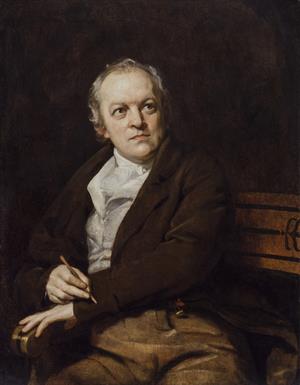PDF chapter test TRY NOW
Name of the poet: William Blake
Name of the poem: The School Boy

William Blake**
William Blake was an English poet, painter, and printmaker. He was born on \(28\) November \(1757\), in London, to James and Catherine Blake. He was the third of seven children, two of whom died in infancy.
Blake started engraving copies of drawings of Greek antiquities purchased for him by his father. He attended school only long enough to learn reading and writing. When William was ten years old, his parents sent him to a drawing school realising his talent in art. He received his part of school education at home from his mother.
He read avidly on subjects of his choice. During this period, Blake made explorations into poetry; his early work displays knowledge of Ben Jonson, Edmund Spenser, and the Psalms. The Bible was an early and profound influence on Blake and remained a source of inspiration throughout his life.
While Blake’s profession was engraving and his principal hobby was painting in watercolours, he wrote poetry from boyhood. Blake had the habit of using a technique called illuminated printing (where a text would be accompanied by a unique form of engraved illustrations) while publishing his text.
In \(1789\), Blake created the first of the poetical works for which he is chiefly remembered: Songs of Innocence, with \(19\) poems on \(26\) prints. The poems were written for children, and they represent the innocence and vulnerability of them. Some of the well-known poems from the collection are “The Chimney Sweeper” and “The Lamb”. In \(1794\), Blake published Songs of Experience and combined it with his previous lyrics to form Songs of Innocence and of Experience Shewing the Two Contrary States of the Human Soul. Some of the well-known poems of the collection are “The Tyger” and “The Poison Tree”.
Most of the anthologised poems of Blake are often taken from the collections mentioned above.
Blake died in London on August \(12\), \(1827\), at the age of \(69\). He was then survived by his wife Catherine Blake, who had been indispensable aid in his life and profession. It is said that Blake, in his final moments, drew a portrait of his wife, stating that ‘she had always been an angel to him’.
Though largely unrecogniSed during his lifetime, Blake is now considered a key figure in the history of the poetry and visual arts of the Romantic Age.
Some of his well-known writings are:
- Songs of Innocence (\(1789\))
- Songs of Innocence and of Experience Shewing the Two Contrary States of the Human Soul (\(1794\))
Reference:
**Blake in a portrait by Thomas Phillips: https://commons.wikimedia.org/wiki/File:William_Blake_by_Thomas_Phillips.jpg
